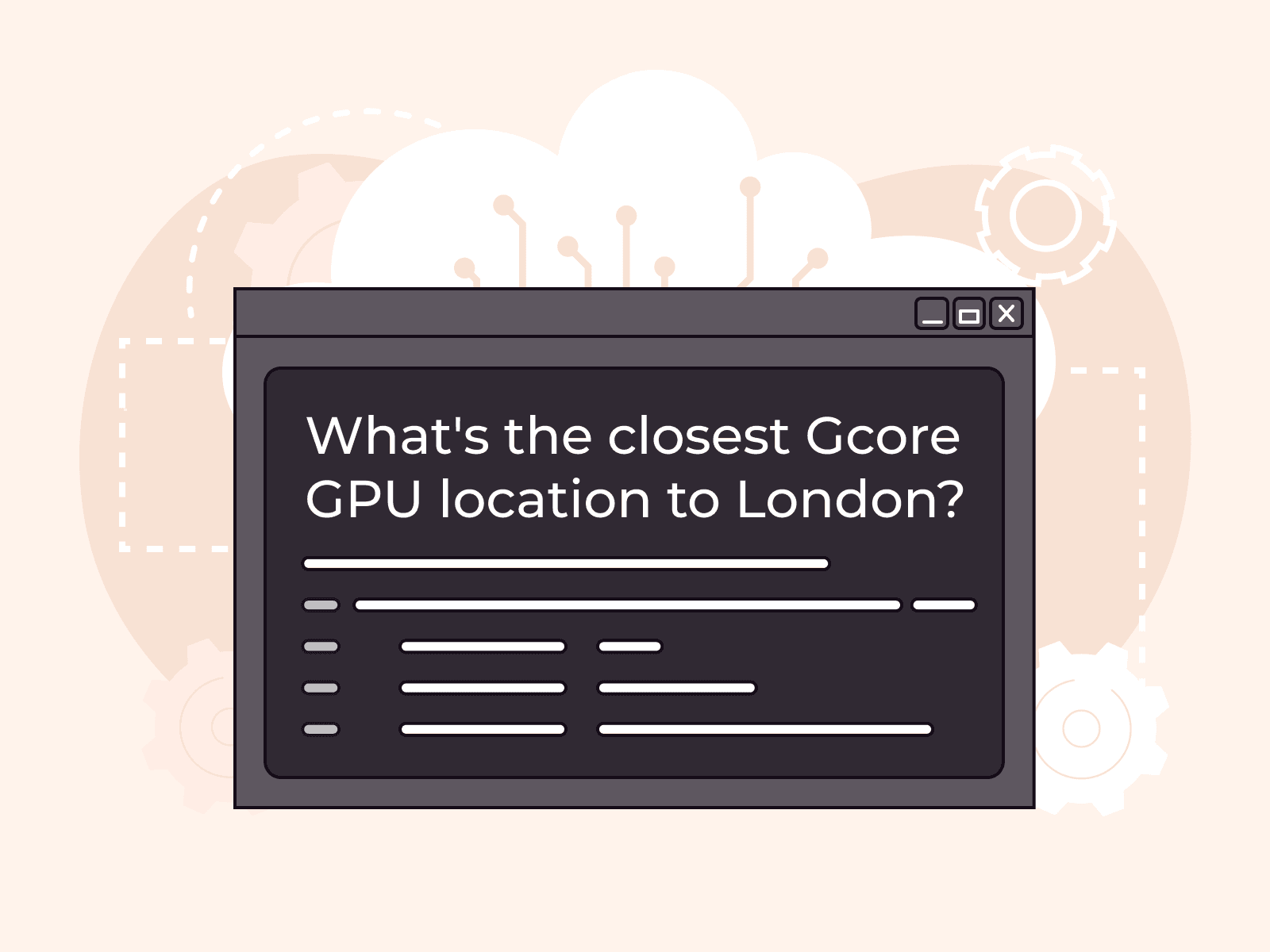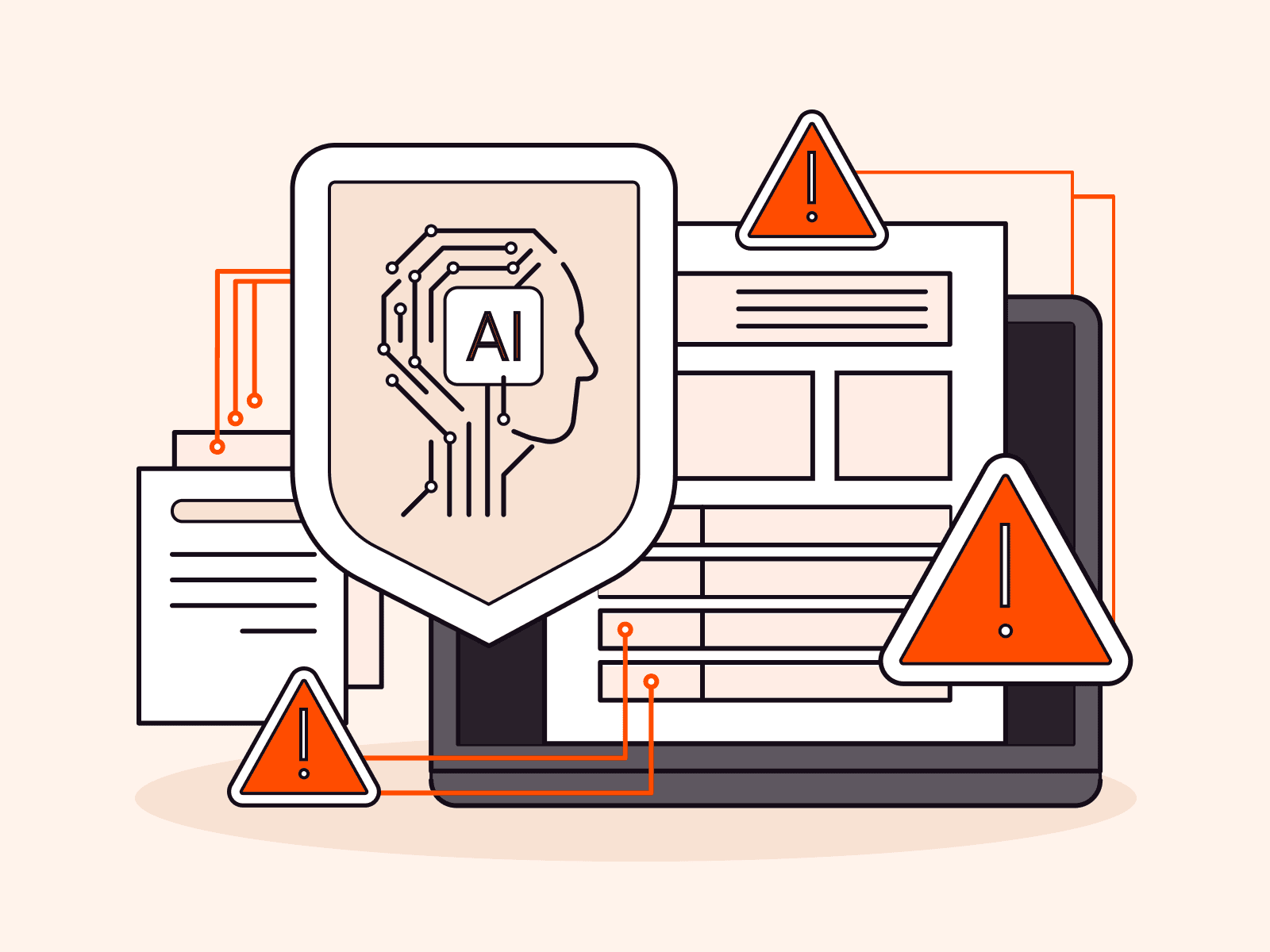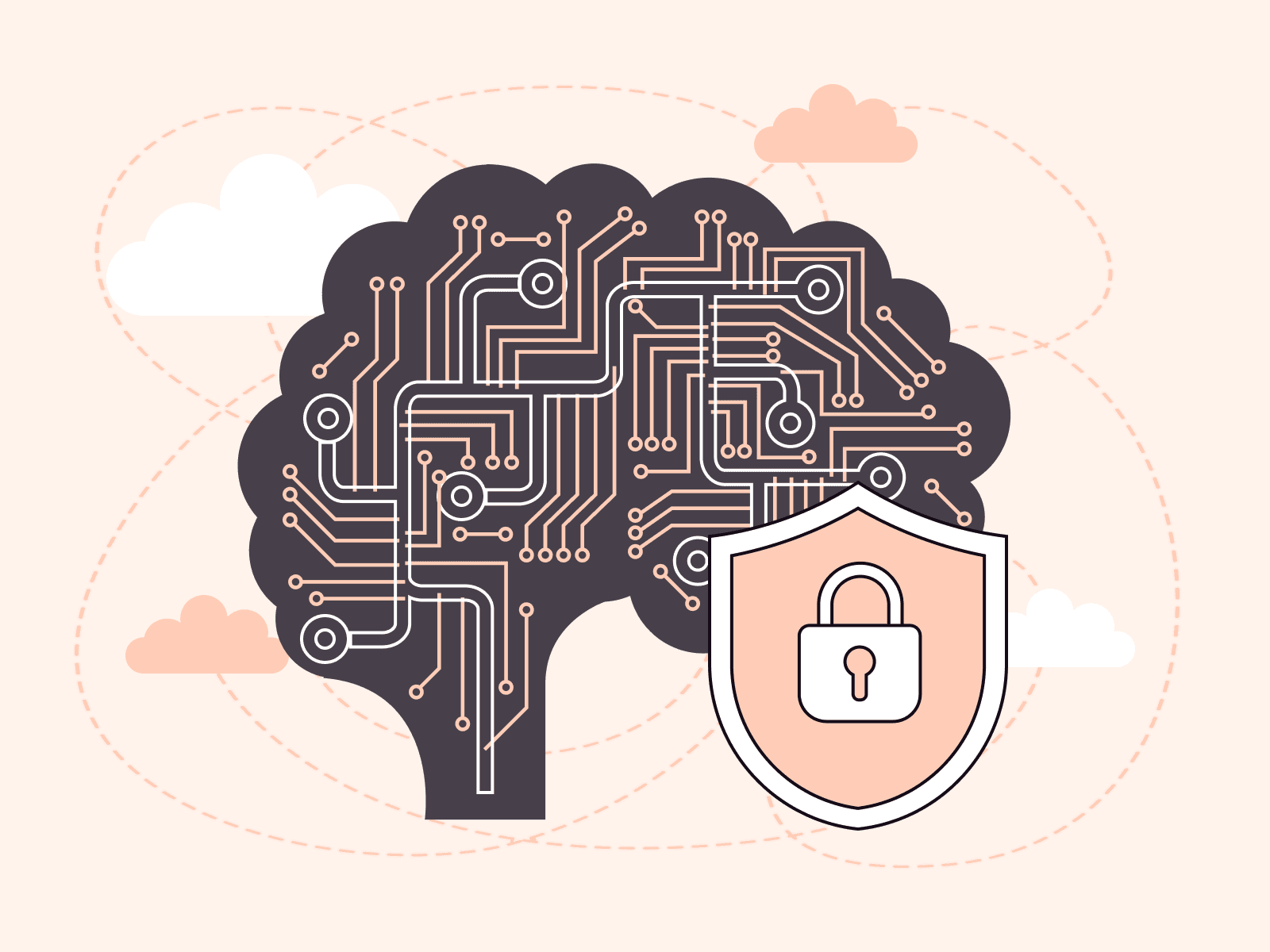Large-scale AI model training is one step of the process designed to build advanced AI models capable of interpreting and learning from vast datasets. Large-scale AI models go beyond conventional machine learning capabilities, extracting insights from extensive and complex data structures and setting the foundation for transformative solutions in tech-driven sectors. Training is when the model learns from data in order to make decisions or predictions, and the training process must be optimized for huge datasets. This article will explore the significance of large-scale AI model training for strategic decision-making, explain how it works, and outline the challenges and best practices associated with developing these powerful computational tools.
What Is Large-Scale AI Model Training?
Large-scale AI model training refers to the process of developing artificial intelligence (AI) models based on vast quantities of data. While it always involves training models of immense size, using trillions of data pieces, complex architectures with billions of parameters, and high-powered computational resources, there’s no universally accepted definition of how large a model must be to be termed “large-scale.”
With that said, OpenAI’s GPT models serve as notable examples that have been described as “large-scale” models. In 2018, GPT-1 was considered large-scale with its 117 million parameters and approximately 600 billion tokens. Fast forward to 2023, and GPT-4 dramatically expanded its scale, boasting around 1.7 trillion parameters and approximately 13 trillion tokens, including words, pieces of images, and code. Evidently, the dataset size required to cross into large-scale model territory is growing year on year.
What Is the Difference Between Large-Scale and Regular AI Model Training?
The training process of a large-scale AI model is similar to that of any AI model, with both striving towards the same primary goal: to create a versatile model that excels at a variety of tasks. These tasks, common to AI models of all scales, include natural language processing and computer vision. The key difference lies in the technologies used. As the models’ size and complexity levels increase, more specialized technologies are required.
Consider a car analogy. Building a car that can reach 100 mph is fairly common. Pushing to 150 or 200 mph is achievable by some manufacturers. However, reaching speeds like 300 mph is a different ball game, reserved for custom models with specialized technologies. The same goes for the progression from regular to large-scale AI models: As models grow larger, the technologies needed for training become more advanced and specific, in order to handle the increased demands of data volume and complexity. Let’s explore how large-scale AI models training works, including the technologies—hardware and software—it requires, and why.
How Does Large-Scale AI Model Training Work?
Artificial intelligence encompasses a structured process that starts with a conceptual understanding of a problem and ends with the deployment of a model capable of solving it. The process, visualized in the above image, is discussed in depth in Gcore’s introductory guide to AI.

During training, step five, the model learns from data in order to make decisions or predictions. When it comes to large-scale AI models, the training step differs from the normal process because it involves vast amounts of data that demand advanced algorithms and substantial computational resources to ensure that the model’s learning is both deep and broad. Distributed computing and parallelism are commonly deployed. This in turn requires different hardware and software compared to a regular model, and changes to both the pretraining and fine-tuning stages. Let’s look at all of these changes in depth.
Distributed Computing and Parallelism
Distributed computing and parallelism are key strategies for decreasing training times and handling the extensive data involved in large-scale AI models, and both demand specific hardware and software. The main distinction between distributed computing and parallelism lies in their scope and implementation.
Parallelism speeds up data processing by simultaneously performing multiple tasks on the dataset. This includes:
- Data parallelism: Multiple sets of data are processed simultaneously.
- Model parallelism: Different parts of the model are processed on different machines, which is often essential in large-scale model training as scaling up resources on a single host is not feasible.
- Pipeline parallelism: Different stages of the model are distributed across multiple processors for simultaneous processing.
Parallelism can occur both within a single machine and across multiple machines.
Distributed computing, on the other hand, refers to the use of multiple machines—a network of interconnected computers or a cluster—to handle and analyze large amounts of data. It’s a type of horizontal scaling that works by increasing the overall capacity of the training hardware, allowing for bigger datasets than those that can be handled by a single machine.
Each machine trains a portion of the model or a subset of the data, completing the task faster than a single machine could. The results from each machine are aggregated to form the final output.

In large-scale AI model training, distributed computing and parallelism often work in tandem. Distributed computing serves as the outer layer of the training structure, processing vast datasets by expanding the hardware’s capacity. Parallelism serves as its inner layer, enhancing the efficiency within this expanded setup.
To support these processes, specific hardware and software are required.
Hardware
GPUs (graphics processing units) have a high throughput meaning they can process a large volume of data simultaneously. This makes them a favorite hardware choice for performing many operations in parallel, making them suitable for the iterative and complex calculations AI training demands. IPUs (Intelligence Processing Units) are emerging as an efficient alternative for specific AI computations, offering optimization for particular types of AI workloads. Gcore’s AI Infrastructure, which includes offerings like the NVIDIA A100 and H100 GPUs, provides the necessary horsepower for training at scale.
For distributed computing, interconnected GPUs or IPUs work together in a cluster, handling large-scale AI models that would be impossible on a single machine. For parallelism, GPUs and IPUs all have numerous cores that are designed to support parallelism by executing multiple tasks simultaneously.
Software
Efficient large-scale AI training is achieved throughthe combination of this advanced hardware alongside specialized software frameworks. These frameworks—such as TensorFlow and PyTorch—are designed to leverage the capabilities of GPUs and TPUs (tensor processing units,) optimizing parallel processing and managing large datasets effectively to maximize performance. They provide built-in distributed computing support and effective scheduling and load-balancing algorithms for efficient task distribution and processor utilization.
AI Infrastructure as a Service (IaaS) simplifies the software process by offering hardware that comes with software integrations already set up. Gcore’s GPUs, for example, are available equipped with dozens of popular frameworks and tools like TensorFlow, PyTorch, Keras, PaddlePaddle, and Hugging Face.
Large-Scale AI Model Training Steps and Best Practices
Training large-scale AI models typically follows a two-stage approach, just like regular AI model training. Initially, models are pretrained on general tasks to gain broad knowledge, using extensive, relevant datasets like internet text corpora for LLMs. They are then fine-tuned on smaller, task-specific datasets for specialized use cases. For example, a model could be fine-tuned on customer service interactions to train customer support chatbots.

In each stage, there are certain best practices that are particular to large-scale AI models that should be followed for an optimized training process and outcome.
Pretraining
In the pretraining stage, the model is exposed to a broad array of data, allowing it to learn general features and patterns. The quality of the initial dataset establishes the foundation for the model’s capabilities.
Pretraining best practices include:
- Making sure to use a diverse and accurately labeled dataset to give the model a comprehensive understanding of the problem space. This can be achieved by:
- Using a combination of smaller datasets to create a bigger, more complex one.
- Using crowd labeling by involving volunteers in creating the new dataset. Crowd labeling was used for Mozilla Common Voice. This approach improves diversity and reduces biases.
- Using multiple existing more specific AI models to parse data and build new datasets.
- Keeping detailed performance logs to track the model’s learning progress and identify any errors early on. This is also relevant to regular-size datasets, but particularly important for large-scale ones because of the resources that the complete training process requires, and the potential wastage if errors are not identified early.
- Using robust, specialized hardware and techniques to handle the extensive computational needs of this stage and to load all data efficiently.
- Integrating mixed precision training to lower memory usage, allowing for faster training on existing hardware without compromising the quality of the model.
- Using gradient accumulation, which involves storing gradients—error direction guides for model tweaks—over multiple mini-batches and updating the model parameters less frequently, to manage GPU memory use effectively.
Fine-Tuning
In the fine-tuning stage, the pretrained model is further trained on a more specific dataset related to the particular task it needs to perform. This is where the model’s general knowledge is honed for specialized applications.
A medical model might be trained on CT images showing cases of lung cancer, for example, as opposed to a broad selection of chest CT scans that were used in pretraining. A different medical model from the same pretraining set could be created by fine-tuning on CTs that show pneumonia.
Fine-tuning best practices include:
- Selecting smaller datasets that are closely related to the specific tasks to allow the model to refine its abilities.
- Monitoring metrics and adjusting hyperparameters to optimize the model’s performance for its intended application. While this applies to all AI model training, it is particularly important to control of the utilization resources for large-scale datasets. Wasting 10% of performance on a large dataset can increase the total training time by days, or even weeks. Taking into account the price of high-end ML hardware, this can have a major financial impact on the project.
- Implementing a distributed learning approach to manage the workload effectively, especially when handling very large models or datasets.
- Techniques such as pruning, which can be used to eliminate unnecessary connections in the neural network, and quantization,which can be applied to reduce the precision of the model’s parameters, should be applied to reduce the model’s size and computational demand, preparing it for deployment.
Why Is Large-Scale AI Model Training Important?
Large-scale AI model training allows models to decipher and use massive data sets. This capability can enhance decision-making, operational performance, and competitive strategy across industries relative to standard AI model training by enabling more accurate predictions, deeper insights, faster processing, and the ability to handle complex, multivariate scenarios. First, let’s understand how exactly large datasets provide these advantages.
How Large-Scale AI Models Provide Deeper Insights
By training models on massive datasets, AI can identify patterns and correlations with greater accuracy, leading to predictions that are both more precise and more valuable than when smaller datasets are used. The increased scale allows for deeper, more comprehensive insights to be drawn.
For example, in e-commerce, nuanced trends in customer behavior that might be missed by smaller-scale models can be identified and acted upon. A smaller-scale AI model could analyze basic data like most purchased items, frequently visited pages, and customer reviews to predict customer behavior. But a large-scale AI model, trained on a much larger dataset, could pick up on more nuanced trends. It might identify that customers who buy a specific type of product often make purchases at a certain time of the day. This insight, which could easily be missed by a smaller-scale model, can be leveraged to optimize marketing strategies, personalize customer experience, drive sales, and improve customer retention.
Large-scale AI models excel in complex, multivariate scenarios, considering numerous factors simultaneously to provide robust and comprehensive predictions, a capability particularly useful in areas like climate modeling or financial risk assessment. A small-scale AI model might analyze a patient’s medical history, current symptoms, and basic lab results to predict the likelihood of a specific disease. However, a large-scale AI model could integrate data from a wider range of sources, including genetic information, environmental factors, lifestyle habits, and data from wearable devices that track sleep patterns or physical activity. It could identify that patients with a specific genetic marker, combined with certain lifestyle habits and environmental exposures, have a higher risk of developing a particular health condition. This nuanced understanding can account for a vast number of variables and interpret them to enhance disease prediction, prevention strategies, and personalized treatment plans, ultimately leading to improved patient outcomes.
Now we understand how large-scale AI model training delivers benefits, let’s look at five key industries that are benefitting from adopting large-scale AI model training.
Healthcare
In the healthcare sector, large-scale AI model training significantly enhances ROI and performance. By analyzing extensive patient data and medical research, AI models can predict disease trends, leading to improved resource allocation and preventive healthcare strategies. This approach not only offers actionable insights for better healthcare management but also ensures a higher return on investment, as compared to smaller models which may lack sufficient data on the numerous complex variables in healthcare and thus lack actionable insights.
AI’s ability to solve complex problems manifests in advanced disease diagnosis and personalized patient care management. For example, at Duke University, a massive AI model was developed using data from numerous hospitals and research centers, offering participating institutions actionable insights that they wouldn’t be able to uncover based on their own data alone. The team expects to create hundreds, even thousands, of specialized AI models based on the dataset.
E-commerce
Online retail giants like Amazon and Walmart use large-scale AI models to analyze consumer behavior and purchasing patterns, optimizing supply chain management and personalizing the shopping experience. This optimization leads to efficient inventory management, reducing resource waste and promoting smarter expenditure. Large-scale AI models in retail are also instrumental in predicting product demand and consumer trends, ensuring businesses maintain cost-effectiveness and stay ahead of the competition.
Technology and Mapping
Mapping and navigation services like Google Maps leverage large-scale AI to process vast quantities of data, providing accurate route suggestions, traffic predictions, and timely updates, enhancing the efficiency of the technology’s performance. The improved user experience thereby attracts more users, leading to more data—a positive feedback cycle for user experience illustrating to importance of leveraging large-scale AI model training for a competitive edge.
Finance
In finance, large-scale AI model training is key to solving complex problems like fraud detection and market trend analysis with an unprecedented level of efficiency and speed. By studying intricate patterns in user behavior, transaction dates, and financial news, fraudulent activities and stock market movements can be predicted in real time, enabling professionals and customers alike to take corrective action before a crisis occurs, limit risk-taking behavior, and make smart investments.
What Are the Challenges of Large-Scale Model Training?
Training large-scale AI models involves navigating certain challenges:
- Resource requirements: Large-scale AI model training requires immense computational power and significant storage capacity. The challenge lies in managing the escalating costs associated with powerful hardware and the energy needed for training and maintaining these extensive AI systems.
- Data management and quality: Ensuring the quality and diversity of data involves gathering vast amounts of data, cleaning it to remove errors, and ensuring it is varied enough to train the models effectively, thus preventing biases that could lead to skewed outcomes. The larger the data quantity, the more challenging this step becomes.
- Talent and expertise: There is a growing need for skilled professionals who can design, develop, and manage these large-scale AI models, and the industry is experiencing a talent gap.
- Environmental and ethical concerns: The energy consumption of training large-scale AI models raises concerns about their environmental impact, notably their carbon footprint, which can be reduced by leveraging more energy-efficient hardware and optimizing algorithms to reduce power usage.
- Reproducibility: Due to their complexity, reproducing results with large-scale models can be challenging. Reproducibility is essential in scientific research to validate findings. Implementing standardized testing environments, thorough documentation of training processes, and sharing model architectures and parameters openly within the scientific community can help to overcome this challenge.
Evidently, many of these challenges can be overcome with good planning.
Conclusion
Large-scale AI model training presents distinct advantages over conventional dataset approaches. While navigating its complexities and adhering to best practices can be a challenge, if you choose to adopt AI’s capabilities on a large scale, you position your projects at the forefront of an ever-evolving and highly competitive industry.
Gcore simplifies large-scale AI model training with its AI infrastructure-as-a-service model, offering top-of-the-range, powerful NVIDIA L40S, H100, and A100 GPUs with popular AI and ML framework integrations like PyTorch, Tensor Flow, Keras, and PaddlePaddle. You can enjoy efficiency and speed in training, leading to quicker deployment and business impact. Gcore’s integration of data and model parallelism further boosts the scalability and speed of the AI training process. Plus, with pay-as-you-go pricing you only pay for what you use, making it a cost-effective solution for your AI training needs, whatever the size of your dataset.
Related articles
Subscribe to our newsletter
Get the latest industry trends, exclusive insights, and Gcore updates delivered straight to your inbox.






